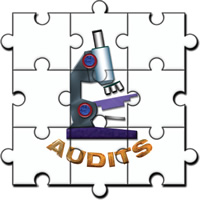The 2013 HME Handbook: Audits
Getting Your Ducks in a Row
How to implement documentation procedures to protect claims from audits and respond to auditor requests.
 While competitive bidding Round Two poses to radically redefine the HME industry, providers have been experiencing an incredible level of upheaval for the past two years thanks to the Centers for Medicare and Medicaid’s radically ramped-up pre- and post-payment audit programs.
While competitive bidding Round Two poses to radically redefine the HME industry, providers have been experiencing an incredible level of upheaval for the past two years thanks to the Centers for Medicare and Medicaid’s radically ramped-up pre- and post-payment audit programs.
In the fiscal year of 2010, CMS invested $311 million in its program integrity, which marked a 50 percent increase from 2009’s outlay. In 2011, providers felt the effect of that investment in a bad way. Thanks to the Recovery Audit Contractor (RAC); Comprehensive Error Rate Testing (CERT); and Zone Program Integrity Contractor (ZPIC) audits, claims dating back to October 2007 were subject to recoupment, and providers facing pre-payment audit could have 100 percent of their incoming claims reviewed before payment.
The worst part is that audits are about to get even tougher. CMS is investing hundreds of millions of dollars into predictive modeling systems that scour through provider Medicare claims; new policy changes, such as face-to-face evaluations, and changes in the oversight of the RAC program will impact how providers contend with audits.
The upshot is that while industry associations work with CMS and Congress to rein in an out-of-control audit program so that it functions in a reasonable fashion, audits aren’t going anywhere for the foreseeable future. That means providers need to have a plan. Responding to audit requests comes down to having the right documentation procedures in place. What are the processes providers should implement?
Assess staff expertise. Make sure that all team members involved in the claims workflow understand all documentation requirements needed to ensure that claims will not raise flags with audit contractors. Staff should also know what is required to respond to auditor documentation requests. Work with internal and third party experts as needed to train everyone on the team that needs help, and require all claims staff to regularly refer to key reference documents such as jurisdiction supplier manuals to monitor any possible policies changes or new requirements.
Set concrete requirements for staff and partners. Provider management must set guidelines that require complete and correct medical documentation for all claims. Workflows must conform to documentation requirements, and no claims should be able go past any step in the workflow without it having the necessary documentation.
More to the point, those requirements must apply to both staff and all referral partners — and the latter group could prove problematic, at least initially. This means providers must work to educate physician staff via in-services and similar opportunities so that those partners understand any changes in documentation policies. More than likely, physician partners and other referral sources will be more than understanding, because they are experiencing the same audit pressures from Medicare, as well.
Leverage information technology. One of the key tools to help providers make the audit process as smooth and rapid as possible is software. The billing, claims and management systems they have in place often can help providers implement the workflow procedures that will ensure they are collecting all the necessary documentation up-front, and that it is formatted the correct way. Also, because billing software houses all documentation electronically, it inherently makes responding to auditor documentation requests much easier. Auditors will stipulate which documentation is needed, and the provider can quickly retrieve it to prove the claim’s validity.
Perform self-audits. Routinely check claims to determine if they are exposing the business to audits through a faulty or missing workflow step. Claims should be reviewed for missing or incorrectly formatted documentation elements, and if any are found, the provider should be looking for repeat problems to isolate a trend. Here, too, software can help. The overwhelming majority of audits result from data analysis (no small wonder, given that the audit contractors are typically owner by technology companies). So, the reporting tools in software systems can help warn HME providers analyze their claims to judge their level of exposure to audits.
Remember that appeals are part of the process. While CMS bragged to Congress that, once totaled, it estimated it will have recovered $10.4 billion during its 2012 audits, it downplayed the fact that HME providers were seeing as high as 60 percent of their audits being overturned when brought to appeal. That means providers need to not only prepare to have documentation in place to respond to audit requests, but also to overturn any recoupments.
Points to take away:
- CMS increased the volume and pace of its pre- and post-payment Medicare claims audits, and will most likely expand the program.
- Providers must implement strict documentation requirements internally and externally, ensuring both staff and referrals follow them.
- Staff might require both internal training and education from thirdparty resources.
- Leverage software to ensure documentation requirements are met throughout the workflow.
- Use software to help isolate problems and perform internal audits.
- A recoupment is not the end of the process. Providers must plan for the appeals process, which more often than not yields overturns.
Learn More:
- Because CMS is poised to expand its audit program even further, audit expert Wayne van Halem, president of audit consulting firm The van Halem Group LLC, will be presenting a June 25 webinar at 2 p.m. Eastern. He will outline key coming changes and discuss how providers can prepare. Visit hme-business.com to sign up.
This article originally appeared in the June 2013 issue of HME Business.